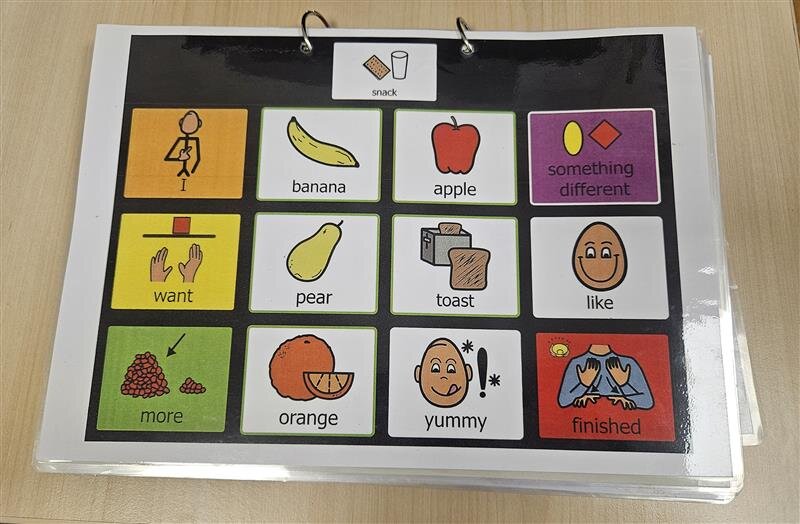
Articles
We aim to give food for thought as well as inspiring your creativity and
providing practical ideas you can’t wait to implement in your own settings!
Ensuring Every Child Has a Voice
Communication is at the heart of learning, social interaction, and self-expression, but for many children, particularly those with speech, language, and communication needs, spoken language is not always accessible.
This is where Augmentative and Alternative Communication (AAC) plays a very important role

What is AAC?
AAC refers to a wide range of methods that support or replace spoken language.
Some forms of AAC are unaided, meaning they rely solely on the body - such as Makaton, British Sign Language (BSL), gestures, or facial expressions.
Others are aided, using tools like picture communication boards, symbols, speech-generating devices, or dedicated AAC apps.
From early years right up to adulthood, AAC provides individuals with the tools they need to express themselves, interact with others, and participate fully in their world.
How is AAC used?
In early years education, communication is crucial to learning, play, and social development, however, many young children with speech delays or additional needs find it difficult to express their thoughts, needs, or emotions.
Without a reliable way to communicate, they can become withdrawn, frustrated, or even distressed.
Introducing AAC at an early stage provides an immediate bridge to communication.
Some children use AAC as a stepping stone to verbal speech, while others rely on it as their primary means of communication.
The use of AAC is not about replacing speech but about providing an accessible way to communicate.
For a child who struggles to form words, having an AAC system in place can reduce frustration, build confidence, and open up opportunities for connection with peers and adults.
For some, this might mean using simple picture symbols to make choices during snack time or signing key words in a song.

Others may use a communication book with core vocabulary to help them express their wants and needs.
By making AAC part of everyday routines, practitioners can help children develop confidence and autonomy in their interactions.
Benefits of AAC
One of the greatest benefits of AAC is its ability to break down barriers to learning and play opportunities.
A child who struggles to answer questions verbally can use a device or symbol card to participate in group discussions.
A non-speaking child can use a laminated picture board or even a speech-generating app to express themselves or join in circle time activities.
When AAC is embedded across a setting, it promotes inclusion, ensuring that all children, regardless of their communication ability, have a voice in a communication friendly environment.
Importantly, AAC does not just benefit those with speech difficulties, it enhances communication for all children.
Visual supports, symbols, and signing help reinforce understanding, support memory, and create a more language rich environment.
This is particularly valuable for children with additional learning needs, English as an Additional Language (EAL), or social communication difficulties.
As children grow, their communication needs evolve.
AAC is not just for the early years, it supports lifelong learning and independence.
Many children who start with simple picture-based systems go on to use more advanced AAC technology, including eye-gaze devices, tablet-based communication apps, or text-to-speech software.
Others may develop verbal language alongside their AAC use, finding that it provides support during times of stress or when learning new vocabulary.
For older children and young adults, AAC plays a crucial role in education, friendships, and self-advocacy.
It allows them to participate in classroom discussions, build relationships, and express complex thoughts and emotions.
Without AAC, many of these children would struggle to have their voices heard.
Addressing misconceptions
Despite its many benefits, AAC is often misunderstood.
Some worry that using AAC will stop a child from learning to talk, but research consistently shows that it supports language development rather than hindering it.
In fact, providing a child with a reliable way to communicate often reduces frustration and encourages verbal speech when they are ready.
There is also a misconception that AAC is only for those who will never develop spoken language.
In reality, many children use AAC as a temporary or additional support, particularly during early language development.
Others rely on AAC for life, but this does not mean they cannot be successful, independent, and engaged communicators.
In conclusion…
When we integrate AAC into education, we send a powerful message that communication belongs to everyone. Whether through signs, symbols, devices, or gestures, every child deserves the opportunity to express themselves and be understood.
By embracing AAC in our classrooms, homes, and communities, we can create a more inclusive world, one where every voice, in every form, is heard and valued equally.

With many thanks to Jayde Conway for this insightful article.
Jayde is an experienced Early Years SEND Lead at The Sunflower Children's Centre and also a Licenced Makaton Tutor and founder of Sign and Bloom, a local business dedicated to making communication and inclusion accessible for individuals of all ages and abilities.
Jayde offers accredited Makaton training and Bespoke SEND Consultancy through training workshops, inclusive activities and supporting resources.
Sign and Bloom's mission is to empower individuals, their families, and professionals by providing tailored support that ensures everyone is able to express themselves and be heard within the community.
To learn more, visit www.signandbloom.co.uk or follow @signandbloom on Facebook.